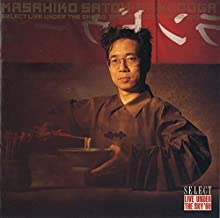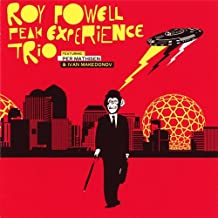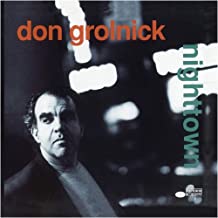
Daily Dose Of Jazz…
Masabumi Kikuchi was born on October 19, 1939 in Tokyo, Japan and lived his early life in World War II and post-war country. He studied piano and music at the Tokyo Art College High School. After graduating, he joined Lionel Hampton’s Japanese touring band.
Known for his eclectic music that ranges from vanguard classical to fusion and digital music. Not only working with Hampton, but he also performed with Sonny Rollins, Woody Herman, Mal Waldron, Joe Henderson, McCoy Tyner, Gil Evans, Elvin Jones, Miles Davis, Gary Peacock, Paul Motian, Billy Harper, and Hannibal Peterson.
As a leader and co~leader, he recorded twenty-five albums, and as a sideman or member of other groups, he recorded twenty~eight albums. Pianist and composer Masabumi Kikuchi passed away from a subdural hematoma on July 6, 2015 at a hospital in Manhasset, New York.
More Posts: bandleader,composer,history,instrumental,jazz,music,piano

Daily Dose Of Jazz…
Masahiko Satoh was born on October 6, 1941 in Tokyo, Japan and the family home contained a piano. He started playing at the age of five, and twelve years later he began playing professionally accompanying singers, magicians, and strippers at a cabaret in the Ginza district.
By 1959 Satoh began playing in Georgie Kawaguchi’s band, together with alto saxophonist Sadao Watanabe and tenor saxophonist Akira Miyazawa. After graduating from Keio University, at the age of 26 he moved to the United States to study at the Berklee College of Music. During those two years of study, he read about composing and arranging, earned money working in a food shop, and played the piano in a hotel.
1968 had Masahiko writing and conducting the music for a series of pieces that were combined with dance and performed around New York City. After returning to Japan, he recorded Palladium, his first album as a leader, and appeared on a Helen Merrill album.
In the late 1960s and early 1970s, his career led him to perform in a free, percussive style. Masahiko played at the 1971 Berlin Jazz Festival as part of a trio, using at the time an unusual ring modulator to alter the sound. During that period he recorded with Attila Zoller, Karl Berger, and Albert Mangelsdorff. He wrote the psychedelic music for the 1973 anime film Belladonna of Sadness.
He went on to write arrangements for recordings led by, among others, Helen Merrill, Kimiko Itoh, and Nancy Wilson. He arranged for strings and quartet on Art Farmer’s 1983 album Maiden Voyage, formed a large group, named Rantooga, that combined various forms of folk music from around the world, and composed for film, television, and advertisements. By the early 1990s pianist, composer, and arranger Masahiko Satoh composed music for a choir of 1,000 Buddhist monks and now spends 70% of his time arranging and composing, the rest on playing and recording.
More Posts: arranger,bandleader,composer,history,instrumental,jazz,music,piano

Daily Dose Of Jazz…
Roy Powell was born on October 2, 1965 in Langham, Rutland, England. His mother was a historian, his father a scientist who moved the family to Canada. His father had given him piano lessons and had been playing the piano for five years. Returning to England when he was ten, he attended New Mills Grammar School at the same time as Lloyd Cole.
In the 1970s, Powell was listening to Duke Ellington and Miles Davis and buying albums through the mail from America. He attended the Royal Northern College of Music, studying piano and classical composition during the day and playing in Manchester jazz clubs at night. After departing school, he started a jazz fusion band and choreographed a ballet. In 1992 he was a member of the Creative Jazz Orchestra. Three years later he moved to Norway to teach.
Powell has been a member of the group InterStatic with Jacob Young, and Jarle Vespestad, and the group Naked Truth with Lorenzo Feliciati, Pat Mastelotto, and Graham Haynes. He recorded the album Mumpbeak with Feliciati, Mastelotto, Bill Laswell, Tony Levin, and Shanir Ezra Blumenkranz. Pianist, organist, composer, and educator Roy Powell has recorded fifteen albums as a leader and continues to perform and record.
More Posts: bandleader,composer,educator,history,instrumental,jazz,music,piano

Daily Dose Of Jazz…
Don Grolnick was born on September 23, 1947 in Brooklyn, New York and grew up in Levittown, New York. Musical life for him started on accordion but later he switched to piano. A childhood Count Basie concert sparked his interest in jazz and soon after they also saw Erroll Garner perform at Carnegie Hall. Attending Tufts University he opted for a major in philosophy rather than music.
After he left Tufts, he formed the jazz-rock band Fire & Ice with guitarist Ken Melville and bassist Stuart Schulman, his friend since childhood. They opened for B.B. King, The Jeff Beck Group, and the Velvet Underground at Boston clubs like the Boston Tea Party and The Ark. This was Grolnick’s first foray into rock and blues as a performer, and began writing within the medium.
Moving back to New York City in 1969 he joined Melville in the jazz fusion band “D”. Pianist Don Grolnick passed away at the age of 48 on June 1, 1996 from non-hodgkin lymphoma.
More Posts: bandleader,composer,history,instrumental,jazz,music,piano

Daily Dose Of Jazz…
Phillip Sanford Wilson was born on September 8, 1941 in St. Louis, Missouri and was a third-generation musician. His grandfather, Ira Kimball, was a riverboat percussionist on the Mississippi to New Orleans.
His recording debut was with Sam Lazar, noted for having one of the first interracial bands in the St. Louis area. After moving to Chicago, Illinois he became a member of the Association for the Advancement of Creative Musicians (AACM) and performed with the Art Ensemble of Chicago.
He joined up with the Paul Butterfield Blues Band in 1967 at a time when the band membership changed greatly, including an added horn section. He recorded three albums with the group. Wilson’s song Love March, written with Gene Dinwiddie, was performed at Woodstock and released in 1970 on the live album from the festival.
Wilson, along with Dinwiddie and fellow former Butterfield Band member Buzz Feiten, formed the jazz-rock band Full Moon in the early 1970s. They recorded a self-titled album which is considered one of the finest early examples of jazz fusion. He was part of the loft jazz scene in 1970s New York City, worked as a session musician for Stax Records in Memphis, Tennessee and with Jimi Hendrix at the Cafe Au Go Go and Generation Club in 1968. They recorded with The Last Poets, Fontella Bass, Olu Dara, David Murray, Anthony Braxton, and Carla Bley. He worked extensively with Lester Bowie. In 1985, along with Bill Laswell co-produced the album Down by Law under the group name Deadline.
He recorded four albums as a leader and as a sideman recorded twenty-one albums with Hamiet Bluiett, Lester Bowie, Anthony Braxton, Paul Butterfield, Julius Hemphill, Sam Lazar, Frank Lowe, Roscoe Mitchell, and David Murray.
Drummer Phillip Wilson, while pursuing his musical career, was stalked and murdered in New York City on March 25, 1992. As a result of America’s Most Wanted television program, Marvin Slater was convicted for premeditated murder in 1997 and sentenced to 33 1/3 years in state prison. The reason for his murder has never been revealed.
More Posts: bandleader,drums,history,instrumental,jazz,music



